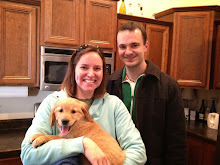I'm WAY behind in getting this updated, as the car sits in the shop FULLY painted now, and for such a major milestone I have not said a thing about it. So while I sit in a Delta Sky Lounge--alone and bored on a Wednesday night--waiting for my flight to France, I still have my laptop and free wifi; what not a better thing to do than update my blog.
The base I'm using is ProSpray, I order it from Chad at AutoRod technologies and he's good to deal with. He ships, so if he's not near you, no problem. I have mine shipped in. The color is Viper GTS Blue, of 97 Dodge Viper notoriety, paint code PBE. It is a beautiful, transluscent blue with metallic that glistens, and when cleared you can look into it about a mile. It is probably one of the most beautiful car colors you'll see, and for sure one of the most beautiful blues you'll come across. Because it is transluscent, coverage and hide is very poor, I have 4-5 coats on this, maybe even six on some parts, by the time it was all said and done. All in all, I sprayed nearly 7 quarts (14 sprayable quarts when reduced 1:1) at a cost of $89/quart. I used SPI slow urethane reducer, and added SPI universal clear activator (slow) at 1 ounce per mixed quart.
Starting out spraying the base I had issues almost immediately. My Finishline wasn't giving me a good pattern try as I might to adjust it in. I was getting a lot of moisture through my line even though I had a two-part filter: water/oil filter and dessicant. I was getting fish eyes and actual water spots all over the car in the base...water spots that looked like hard water had actually dried on the primer and then was sprayed over with the blue. And I was putting the base on way too heavy and ran it in several spots, which meant I had to sand those spots down, which they then turn white and become very difficult to cover. Finally, I had bad tiger striping on all the horizontal surfaces. I will address how I fixed each of these.
My Finishline problem was solved when a friend sent me his Iwata LPH400 with purple cap for metallics and silver cap for clear. Only the purple cap was plugged up so I had to use the silver cap for both base and clear, which it still worked just fine for the metallic base.
To fix the moisture, I bought a DeVilbiss Desiccant snake, which I ended up not being able to use as it cut down my pressure too much. I also put a 20' length of coiled 1/2" copper tubing between my compressor and air filters to help cool the air before entering the booth. And my desiccant was far too small of an amount to be efficient for the entire car, so I had to constantly be changing it out and drying it in a toaster oven at 250 degrees F until it turned blue again. I had recharged desiccant going while I was drying the 'used' desiccant.
To remedy the water spots, I wet sanded the entire car with 1500, then sprayed another 2-3 coats over the entire car.
I had some crunchy base right in the middle of the roof where I didn't reach in good enough and fixed this with 1500 wet as well. The base should go on medium wet--not so wet that it runs or dries shiny, but also not so dry that it looks dry or is crunchy. However, even crunchy base will still look as good as everything else under clear. If I was ever unsure about the base consistency, I sprayed it until it was real wet with SOLVENT based wax and grease remover; this simulates clear coat almost perfectly. If it looks good with this, it will look great with clear. Then immediately wipe the wax and grease remover off.
TO FIX TIGER STRIPES--and this is an amazing fix--I sprayed a medium wet coat in a direction perpendicular or at an angle to the existing striping. Immediately after spraying the panel, WHILE THE BASE IS STILL WET, I increased the pressure 5 psi, held the gun 12 inches from the panel and sprayed a fast drop coat over the entire panel in one direction, then sprayed a second drop coat over the panel in a different direction. It is important to do this while the base is still wet so the drop coat can melt into it. Otherwise, the drop coat will go on dry and will not adhere, which means your clear will not adhere and might peel off in sheets. Do this and the stripes will be GONE. Don't worry if it looks dull and not shiny, that's what the clear is for! Ideally the car should look satin.
I sprayed the car at ~ 25 psi, 90% fan, with the fluid 2.5 to 2.75 turns open, holding gun at 5-6 inches, with the Iwata LPH400 and silver cap.
 |
| Here's an example of what bad tiger stripes would look like. |
 |
| Some paint dripped from the lid of my gun and fell onto the surface of the hood. I learned you should not try to wipe it away or this happens. This made a little crater. Instead, let it dry, wet sand down with 600, then spray over the area again. |
 |
| quarter panel in base |
 |
| This is the car sitting in its final base. You can see how effectively the hood was remedied just by another medium coat and some drop coats. |


















































